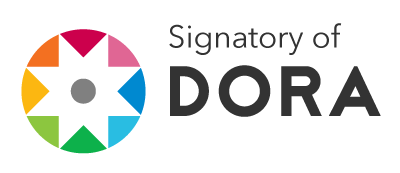Psychometric Characteristics of the Serbian Version of the Ethical Leadership at Work Questionnaire (ELW-RS)
DOI:
https://doi.org/10.19090/pp.v18i2.2550Keywords:
ethical leadership, ELW, CFA, invariance, seven-dimensional modelAbstract
The aim of this study was to adapt the Ethical Leadership at Work Scale (ELW) into Serbian as a self-report measure for subordinates to evaluate their managers, to examine the construct validity of this new version, and to test the level of invariance across gender and organizational sector within the Serbian version (ELW-SR). The sample consisted of 306 participants with at least six months of work experience, predominantly female (72.50%), aged between 20 and 63 years, mostly highly educated, and primarily employed on a permanent basis in the private sector (74.80%). The analysis confirmed that ELW-SR adequately reflects all dimensions of the original scale: people orientation, fairness, power sharing, concern for sustainability, ethical guidance, role clarification, and integrity. Confirmatory factor analysis showed that a seven-dimensional solution with correlated residuals provides a good fit (χ²=, df=; CFI = .92, TLI = .91, RMSEA = .07, and SRMR = .10), thereby affirming the validity of the Serbian version of the scale. However, the study points to the need for caution in generalizing results, particularly concerning variables such as gender and type of organization, where the assumptions of invariance were not unequivocally confirmed. Additionally, the scale's criterion validity was tested to examine how well the test results predict relevant outcomes related to ethical leadership, such as job satisfaction, psychological safety, and self-efficacy. These findings imply that ELW-SR can be an effective tool for assessing ethical leadership in the Serbian business context.
References
Ahmad, I., & Umrani, W. A. (2019). The impact of ethical leadership style on job satisfaction: Mediating role of perception of Green HRM and psychological safety. Leadership & Organization Development Journal, 40(5), 534-547. https://doi.org/10.1108/lodj-12-2018-0461 DOI: https://doi.org/10.1108/LODJ-12-2018-0461
Ahmad, S., Islam, T., Sadiq, M., & Kaleem, A. (2021). Promoting green behavior through ethical leadership: a model of green human resource management and environmental knowledge. Leadership & Organization Development Journal, 42(4), 531-547. https://doi.org/10.1108/LODJ-01-2020-0024 DOI: https://doi.org/10.1108/LODJ-01-2020-0024
Andersen, J. A. (2010). Public versus private managers: How public and private managers differ in leadership behavior. Public Administration Review, 70(1), 131-141. https://doi.org/10.1111/j.1540-6210.2009.02117.x DOI: https://doi.org/10.1111/j.1540-6210.2009.02117.x
Armstrong-Stassen, M., & Ursel, N. D. (2009). Perceived organizational support, career satisfaction, and the retention of older workers. Journal of Occupational and Organizational Psychology, 82(1), 201–220. https://doi.org/10.1348/096317908X288838 DOI: https://doi.org/10.1348/096317908X288838
Banks, G. C., Fischer, T., Gooty, J., & Stock, G. (2021). Ethical leadership: Mapping the terrain for concept cleanup and a future research agenda. The Leadership Quarterly, 32(2), 101471. https://doi.org/10.1016/j.leaqua.2020.101471 DOI: https://doi.org/10.1016/j.leaqua.2020.101471
Banks, G. C., Woznyj, H. M., Wesslen, R. S., Frear, K. A., Berka, G., Heggestad, E. D., & Gordon, H. L. (2019). Strategic recruitment across borders: An investigation of multinational enterprises. Journal of Management, 45(2), 476-509. https://doi.org/10.1177/0149206318764295 DOI: https://doi.org/10.1177/0149206318764295
Boţa-Avram, C., Groşanu, A., & Răchişan, P. R. (2021). Investigating country-level determinant factors on ethical behavior of firms: evidence from CEE countries. Journal of East-West Business, 27(2), 184-205. https://doi.org/10.1080/10669868.2020.1869638 DOI: https://doi.org/10.1080/10669868.2020.1869638
Brown, M. E., and Treviño, L. K. (2006). Ethical leadership: a review and future directions. Leadersh. Q. 17, 595–616. https://doi.org/10.1016/j.leaqua.2006.10.004 DOI: https://doi.org/10.1016/j.leaqua.2006.10.004
Brown, M. E., Treviño, L. K., and Harrison, D. (2005). Ethical leadership: a social learning perspective for construct development and testing. Organizational Behavior and Human Decision Processes, 97, 117–134. https://doi.org/10.1016/j.obhdp.2005.03.002 DOI: https://doi.org/10.1016/j.obhdp.2005.03.002
Cartwright, C. T. (2020). Understanding global leadership in eastern and central Europe: the impacts of culture and intercultural competence. In Understanding National Culture and Ethics in Organizations (pp. 63-74). Emerald Publishing Limited. https://doi.org/10.1108/978-1-83867-022-120201007 DOI: https://doi.org/10.1108/978-1-83867-022-120201007
Chun, J. U., Yammarino, F. J., Dionne, S. D., Sosik, J. J., & Moon, H. K. (2009). Leadership across hierarchical levels: Multiple levels of management and multiple levels of analysis. The Leadership Quarterly, 20(5), 689–707. https://doi.org/10.1016/j.leaqua.2009.06.003 DOI: https://doi.org/10.1016/j.leaqua.2009.06.003
Csath, M. (2022). Leadership development: Examples from Central and Eastern Europe. In Developing Leaders for Real: Proven Approaches that Deliver Impact (pp. 43-53). Emerald Publishing Limited. https://doi.org/10.1108/978-1-80071-364-220221009 DOI: https://doi.org/10.1108/978-1-80071-364-220221009
Demirtas, O. (2015). Ethical leadership influence at organizations: Evidence from the field. Journal of Business Ethics, 126(2), 273-284. https://doi.org/10.1007/s10551-013-1950-5 DOI: https://doi.org/10.1007/s10551-013-1950-5
Den Hartog, D. N. (2015). Ethical leadership. Annual Review of Organizational Psychology and Organizational Behavior, 2(1), 409-434. https://doi.org/10.1146/annurev-orgpsych-032414-111237 DOI: https://doi.org/10.1146/annurev-orgpsych-032414-111237
Den Hartog, D. N., & Belschak, F. D. (2012). Work engagement and Machiavellianism in the ethical leadership process. Journal of Bussiness Ethics 107, 35–47. https://doi.org/10.1007/s10551-012-1296-4 DOI: https://doi.org/10.1007/s10551-012-1296-4
Dolbier, C. L., Webster, J. A., McCalister, K. T., Mallon, M. W., & Steinhardt, M. A. (2005). Reliability and validity of a single-item measure of job satisfaction. American Journal of Health Promotion, 19(3), 194-198. https://doi.org/10.4278/0890-1171-19.3.194 DOI: https://doi.org/10.4278/0890-1171-19.3.194
Eagly, A. H., & Johnson, B. T. (1990). Gender and leadership style: A meta-analysis. Psychological Bulletin, 108(2), 233. https://doi.org/10.1037/0033-2909.108.2.233 DOI: https://doi.org/10.1037//0033-2909.108.2.233
Edmondson, A. (1999). Psychological safety and learning behavior in work teams. Administrative Science Quarterly, 44(2), 350-383. https://doi.org/10.2307/2666999 DOI: https://doi.org/10.2307/2666999
Eisenbeiß, S. A. (2012). Re-thinking ethical leadership: an interdisciplinary integrative approach. Leadersh. Q. 23, 791–808. https://doi.org/10.1016/j.leaqua.2012.03.001 DOI: https://doi.org/10.1016/j.leaqua.2012.03.001
Eisenbeiß, S. A., and Brodbeck, F. (2013). Ethical and unethical leadership: A cross-cultural and cross-sectional analysis. Journal of Bussiness Ethics. 122, 343–359. https://doi.org/10.1007/s10551-013-1740-0 DOI: https://doi.org/10.1007/s10551-013-1740-0
Fischer, T., Hambrick, D. C., Sajons, G. B., & Van Quaquebeke, N. (2020). Beyond the ritualized use of questionnaires: Toward a science of actual behaviors and psychological states. The Leadership Quarterly, 31(4), 101449. https://doi.org/10.1016/S1048-20)30076-X DOI: https://doi.org/10.1016/S1048-9843(20)30076-X
Goljović, N. (2023). The role of emotional development of employees and people oriented leadership in perceiving psychological safety in organizations. Godišnjak za Psihologiju, 20, 75-88. https://doi.org/10.46630/gpsi.20.2023.05 DOI: https://doi.org/10.46630/gpsi.20.2023.05
Hassan, S., Mahsud, R., Yukl, G., & Prussia, G. E. (2013). Ethical and empowering leadership and leader effectiveness. Journal of Managerial Psychology, 28(2), 133–146. https://doi.org/10.1108/02683941311300252 DOI: https://doi.org/10.1108/02683941311300252
Hedrih, V. (2019). Adapting Psychological Tests and Measurement Instruments for Cross-Cultural Research: An Introduction (1st ed.). Routledge. https://doi.org/10.4324/9780429264788 DOI: https://doi.org/10.4324/9780429264788-1
Ho, S. S., Li, A. Y., Tam, K., & Zhang, F. (2015). CEO gender, ethical leadership, and accounting conservatism. Journal of business ethics, 127, 351-370. https://doi.org/10.1007/s10551-013-2044-0 DOI: https://doi.org/10.1007/s10551-013-2044-0
Hollinshead, G., & Maclean, M. (2007). Transition and organizational dissonance in Serbia. Human Relations, 60(10), 1551-1574. https://doi.org/10.1177/0018726707083477 DOI: https://doi.org/10.1177/0018726707083477
Hoogh, A. H. B. D. and Hartog, D. N. D. (2008). Ethical and despotic leadership, relationships with leader's social responsibility, top management team effectiveness and subordinates' optimism: a multi-method study. The Leadership Quarterly, 19(3), 297-311. https://doi.org/10.1016/j.leaqua.2008.03.002 DOI: https://doi.org/10.1016/j.leaqua.2008.03.002
Huang, S. Y., Li, M. W., & Chang, T. W. (2021). Transformational leadership, ethical leadership, and participative leadership in predicting counterproductive work behaviors: evidence from financial technology firms. Frontiers in Psychology, 12, 658727. https://doi.org/10.3389/fpsyg.2021.658727 DOI: https://doi.org/10.3389/fpsyg.2021.658727
Jang, Y., & Oh, Y. (2019). Impact of ethical factors on job satisfaction among Korean nurses. Nursing Ethics, 26(4), 1186-1198. https://doi.org/10.1177/0969733017742959 DOI: https://doi.org/10.1177/0969733017742959
Janovac, T., Djokovic, G., Pusara, A., Misic, V., Milankovic, K., Pavicevic, A., Vukovic, A., & Jovanovic, S. V. (2023). Assessment and ranking of the behavioural leadership model in the process of implementing reforms in the public sector of the Republic of Serbia using the PIPRECIA method. Sustainability, 15(13), 10315. https://doi.org/10.3390/su151310315 DOI: https://doi.org/10.3390/su151310315
Kacmar, K. M., Bachrach, D. G., Harris, K. J., & Zivnuska, S. (2011). Fostering good citizenship through ethical leadership: Exploring the moderating role of gender and organizational politics. Journal of Applied Psychology, 96(3), 633-642. https://doi.org/10.1037/a0021872 DOI: https://doi.org/10.1037/a0021872
Kalshoven, K., Den Hartog, D. N., and De Hoogh, A. H. B. (2011). Ethical leadership at work questionnaire: Development and validation of a multidimensional measure. Leadersh. Q. 22, 51–69. https://doi.org/10.1016/j.leaqua.2010.12.007 DOI: https://doi.org/10.1016/j.leaqua.2010.12.007
Khuntia, R., & Suar, D. (2004). A scale to assess ethical leadership of Indian private and public sector managers. Journal of business ethics, 49, 13-26. https://doi.org/10.1023/B:BUSI.0000013853.80287.da DOI: https://doi.org/10.1023/B:BUSI.0000013853.80287.da
Kim, J. E., & Park, E. J. (2015). A validation study of the modified Korean version of ethical leadership at work questionnaire (K-ELW). Journal of Korean Academy of Nursing, 45(2), 240-250. https://doi.org/10.4040/jkan.2015.45.2.240 DOI: https://doi.org/10.4040/jkan.2015.45.2.240
Kline, R. B. (2013). Assessing statistical aspects of test fairness with structural equation modelling. Educational Research and Evaluation, 19(2-3), 204–222. https://doi.org/10.1080/13803611.2013.767624 DOI: https://doi.org/10.1080/13803611.2013.767624
Lu, C. S., & Lin, C. C. (2014). The effects of ethical leadership and ethical climate on employee ethical behavior in the international port context. Journal of Business Ethics, 124, 209-223. https://doi.org/10.1007/s10551-013-1868-y DOI: https://doi.org/10.1007/s10551-013-1868-y
Metwally, D., Ruiz-Palomino, P., Metwally, M., & Gartzia, L. (2019). How ethical leadership shapes employees’ readiness to change: The mediating role of an organizational culture of effectiveness. Frontiers in Psychology, 10, 2493. https://doi.org/10.3389/fpsyg.2019.02493 DOI: https://doi.org/10.3389/fpsyg.2019.02493
Mitrić-Aćimović, D., Vujić, D., & Dostanić, J. (2012). Relations between assumptions of human nature and work and leadership style preferences. Primenjena Psihologija, 5(4), 375–392. https://doi.org/10.19090/pp.2012.4.375-392 DOI: https://doi.org/10.19090/pp.2012.4.375-392
Mojić, D. (2003). The influence of National Culture on Organizational subcultures and Leadership styles in Serbian enterprises: an empirical analysis. Sociologija, 45(4), 317-346. DOI: https://doi.org/10.2298/SOC0304317M
Ock, J. (2020). How satisfied are you with your job? Estimating the reliability of scores on a single‐item job satisfaction measure. International Journal of Selection and Assessment, 28(3), 297-309. https://doi.org/10.1111/ijsa.12285 DOI: https://doi.org/10.1111/ijsa.12285
Ofori, G., & Toor, S.-U.-R. (2021). Leadership in the Construction Industry: Developing Authentic Leaders in a Dynamic World (1st ed.). Routledge. https://doi.org/10.1201/9781003038757 DOI: https://doi.org/10.4324/9781003038757-1
Resick, C. J., Hanges, P. J., Dickson, M. W., & Mitchelson, J. K. (2006). A cross-cultural examination of the endorsement of ethical leadership. Journal of business ethics, 63, 345-359. https://doi.org/10.1007/s10551-005-3242-1 DOI: https://doi.org/10.1007/s10551-005-3242-1
Saha, R., Shashi, Cerchione, R., Singh, R., & Dahiya, R. (2020). Effect of ethical leadership and corporate social responsibility on firm performance: A systematic review. Corporate Social Responsibility and Environmental Management, 27(2), 409-429. https://doi.org/10.1002/csr.1824 DOI: https://doi.org/10.1002/csr.1824
Schminke, M., Ambrose, M. L., & Neubaum, D. O. (2005). The effect of leader moral development on ethical climate and employee attitudes. Organizational behavior and human decision processes, 97(2), 135-151. https://doi.org/10.1016/j.obhdp.2005.03.006 DOI: https://doi.org/10.1016/j.obhdp.2005.03.006
Silva, V. H., & Duarte, A. P. (2022). Portuguese version of Brown, Treviño and Harrison’s Ethical Leadership Scale: Study of its psychometric properties. Cogent Business & Management, 9(1), 2153437. https://doi.org/10.1080/23311975.2022.2153437 DOI: https://doi.org/10.1080/23311975.2022.2153437
Steinmann, B., Nübold, A., & Maier, G. W. (2016). Validation of a German Version of the Ethical Leadership at Work Questionnaire by Kalshoven et al. (2011). Frontiers in Psychology, 7. https://doi.org/10.3389/fpsyg.2016.00446 DOI: https://doi.org/10.3389/fpsyg.2016.00446
Stojanović-Aleksić, V., Stamenković, M., & Milanović, M. (2016). The analysis of leadership styles in Serbian organizations: Gender influence. TEME – Časopis za Društvene Nauke, 40(4), 1383-1397. https://doi.org/10.22190/TEME1604383S DOI: https://doi.org/10.22190/TEME1604383S
Stošić Panić, D., & Simić, I. (2024). Preferred leadership behavior in the Serbian setting: A cross-regional perspective. Cross-Cultural Research, 58(4), 358-369. https://doi.org/10.1177/10693971241262065 DOI: https://doi.org/10.1177/10693971241262065
Stouten, J., van Dijke, M., Mayer, D. M., De Cremer, D., and Euwema, M. C. (2013). Can a leader be seen as too ethical? The curvilinear effects of ethical leadership. Leadersh. Q. 24, 680–695. https://doi.org/10.1016/j.leaqua.2013.05.002 DOI: https://doi.org/10.1016/j.leaqua.2013.05.002
Tabachnick, B. G., & Fidell, L. S. (2007). Using Multivariate Statistics (5th ed.). Allyn and Bacon.
Tanner, C., Brügger, A., van Schie, S., and Lebherz, C. (2010). Actions speak louder than words: Benefits of ethical behaviors of leaders. Journal of Psychology, 218, 225–233. https://doi.org/10.1027/0044-3409/a000032 DOI: https://doi.org/10.1027/0044-3409/a000032
Tongsoongnern, P. and Lee, W. S. (2022). Influence of green transformational leadership on the workplace pro-environment behavior. Economic Analysis, 55(2), 91-106. https://doi.org/10.28934/ea.22.55.2.pp91-106 DOI: https://doi.org/10.28934/ea.22.55.2.pp91-106
Toor, S., & Ofori, G. (2009). Ethical leadership: Examining the relationships with full range leadership model, employee outcomes, and organizational culture. Journal of Business Ethics, 90, 533–547. https://doi.org/10.1007/s10551-009-0059-3 DOI: https://doi.org/10.1007/s10551-009-0059-3
Treviño, L. K., Brown, M., and Hartman, L. P. (2003). A qualitative investigation of perceived executive ethical leadership: perceptions from inside and outside the executive suite. Human Relations, 56, 5–37. https://doi.org/10.1177/0018726703056001448 DOI: https://doi.org/10.1177/0018726703056001448
Treviño, L. K., Hartman, L. P., and Brown, M. (2000). Moral person and moral manager: How executives develop a reputation for ethical leadership. California Management Review, 42(4), 128−142. https://doi.org/10.2307/41166057 DOI: https://doi.org/10.2307/41166057
Walumbwa, F. O. and Schaubroeck, J. (2009). Leader personality traits and employee voice behavior: mediating roles of ethical leadership and work group psychological safety. Journal of Applied Psychology, 94(5), 1275-1286. https://doi.org/10.1037/a0015848 DOI: https://doi.org/10.1037/a0015848
Zhu, W., Zheng, X., Riggio, R. E., & Zhang, X. (2015). A critical review of theories and measures of ethics‐related leadership. New Directions for Student Leadership, 2015(146), 81-96. https://doi.org/10.1002/yd.20137 DOI: https://doi.org/10.1002/yd.20137
Downloads
Published
How to Cite
Issue
Section
License
Copyright (c) 2025 Nikola Goljović

This work is licensed under a Creative Commons Attribution 4.0 International License.







